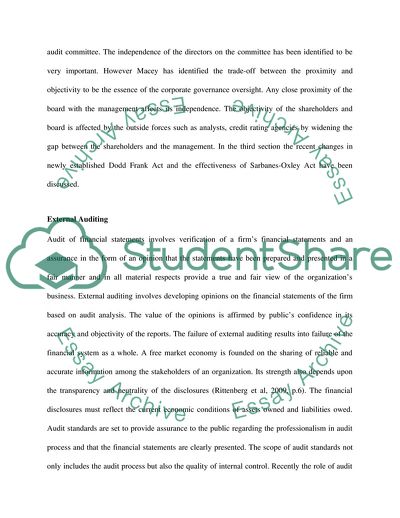Cite this document
(External auditing has changed to accommodate the changes in corporate Essay - 1, n.d.)
External auditing has changed to accommodate the changes in corporate Essay - 1. https://studentshare.org/finance-accounting/1764372-external-auditing-has-changed-to-accommodate-the-changes-in-corporate-governance-in-the-uk-and-other-countries-such-as-south-africa-australia-us-india-and-china
External auditing has changed to accommodate the changes in corporate Essay - 1. https://studentshare.org/finance-accounting/1764372-external-auditing-has-changed-to-accommodate-the-changes-in-corporate-governance-in-the-uk-and-other-countries-such-as-south-africa-australia-us-india-and-china
(External Auditing Has Changed to Accommodate the Changes in Corporate Essay - 1)
External Auditing Has Changed to Accommodate the Changes in Corporate Essay - 1. https://studentshare.org/finance-accounting/1764372-external-auditing-has-changed-to-accommodate-the-changes-in-corporate-governance-in-the-uk-and-other-countries-such-as-south-africa-australia-us-india-and-china.
External Auditing Has Changed to Accommodate the Changes in Corporate Essay - 1. https://studentshare.org/finance-accounting/1764372-external-auditing-has-changed-to-accommodate-the-changes-in-corporate-governance-in-the-uk-and-other-countries-such-as-south-africa-australia-us-india-and-china.
“External Auditing Has Changed to Accommodate the Changes in Corporate Essay - 1”. https://studentshare.org/finance-accounting/1764372-external-auditing-has-changed-to-accommodate-the-changes-in-corporate-governance-in-the-uk-and-other-countries-such-as-south-africa-australia-us-india-and-china.


